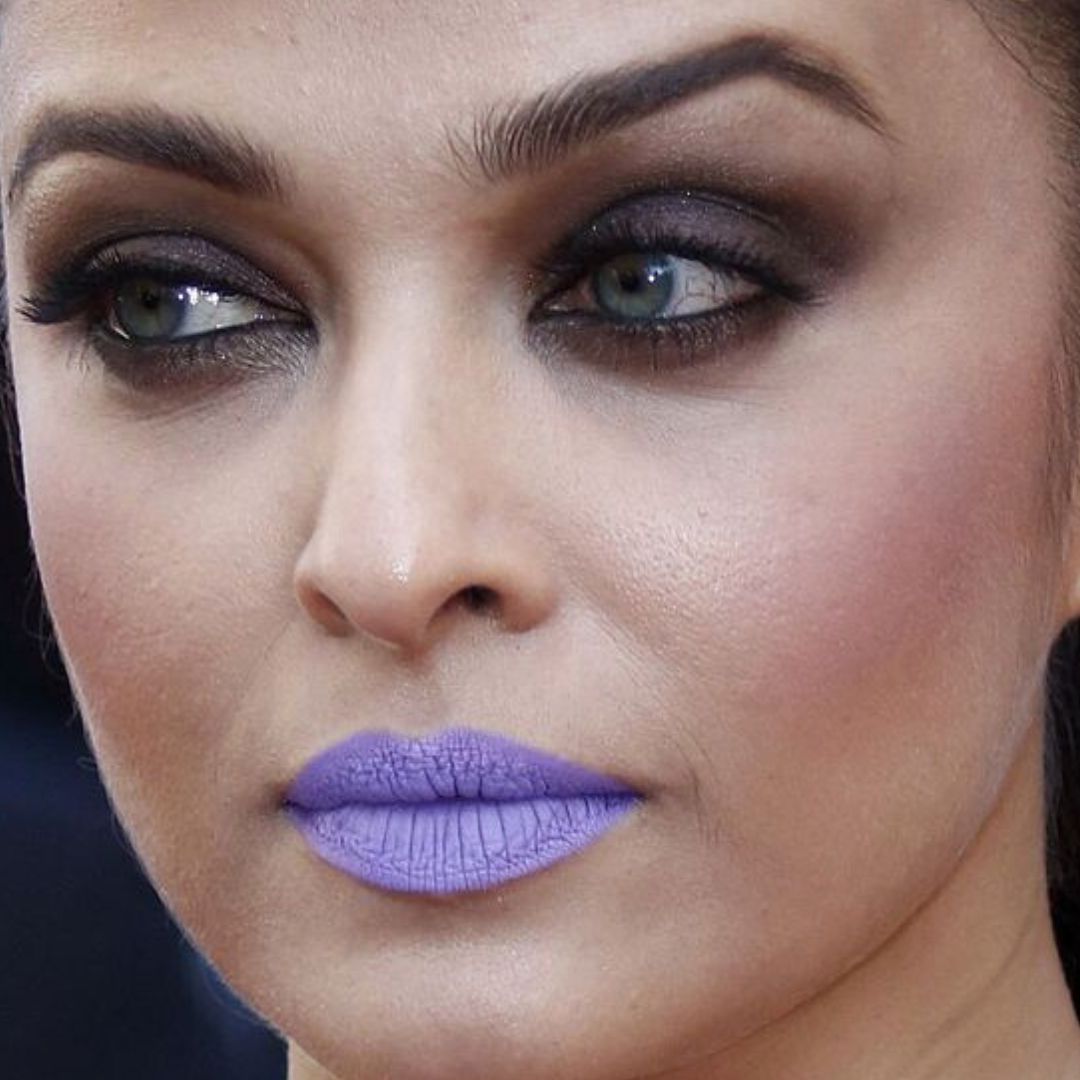Let’s uncover the truth behind the skincare industry’s tall claims.
- Beauty
Is Poreless Skin the Biggest Beauty Lie We Have Been Told?
- ByMeghna Sharma

Aishwarya Rai Bachchan [Courtesy: Pinterest]
If you, like me, are into labels—correction, beauty labels—you’d know that there are currently thousands of products in the market claiming to make your pores disappear. But is it truly feasible to ‘remove’ something that covers your entire body? Not really. And yet an entire section of the skincare industry thrives on people’s belief that a cleanser, toner, ampoule, serum, mask, or all of them combined could make your skin poreless over time.
The beauty industry is built on insecurities. We have seen it happen for decades, nay hundreds of years. Ancient records reflect that in the 6th century, women used to drain blood in a controlled fashion to gain a pale complexion which made them desirable to men—it did cut down their life expectancy considerably though! Or, in the 18th century, women wore foundation containing lead to achieve a ‘whiter’ complexion—which eventually poisoned them. So why do we continue to fall prey to such exaggerated promises without realising that each feature of our body has a specific purpose to serve? Yes, pores included.
Let’s Understand What Are Pores and What is Their Key Role
Fact: everyone has pores—and about five million per person on average. Out of these, 20,000 exist on our face alone. Pores are essentially small openings at the top of hair follicles that cover our body, and they are crucial in maintaining skin health. Dr Geetika Mittal Gupta, Medical Director of ISAAC Luxe, explains, “Pores keep the skin clean and healthy. They allow the regulated transportation of molecules and ions necessary for cellular function. Sweat pores regulate the body temperature, while hair follicle pores support body’s lubrication and keep it moisturised through the excretion of sebum.”

So Is It Possible to Achieve Poreless Skin?
Many factors like genetics, age, sun damage, and more, play a role in pore size. We can’t really erase pores from the surface of the skin, but it is certainly possible to minimise their appearance. A simple, mindful skincare routine could prove useful in tackling skin type or age-related pore concerns. Dr Geetika recommends that oily skin types should cleanse their face twice a day. “Skin that’s often oily, or has clogged pores, may benefit from using a gel cleanser. They help clear oil from the pores, reducing their appearance.” Moisturising is key. “When the skin is well-moisturised, it produces less sebum to compensate for dryness. Choose an oil-free moisturiser as they allow the oil from the sebaceous glands to penetrate more deeply into the skin and prevents the pores from getting clogged,” she adds.
Prolonged sun exposure leads to loss of collagen and water, which causes the tissues beneath the skin to pull at the edge of the pores, making them appear bigger. Dr Geeta Mehra Fazalbhoy, dermatologist and Managing Director & Founder Member of Skin & You Clinic, says, “Use a sunblock with high SPF content…SPF 30 or higher.” You can wear a wide-brimmed hat, or “opt for ultraviolet protective factor (UPF) clothing to further protect the skin,” Dr Geetika suggests. As one grows older, the loss of elastin in the skin causes sagging, making pores more prominent. If you have oily skin, excess sebum production could lead to clogged pores making them larger than usual.
Additionally, regularly exfoliating the skin sloughs away build-up, gunk, and dead skin cells. Use a gentle exfoliant to ensure, perhaps one with glycolic acid—and excellent pore-minimiser—to keep skin smooth and firm. A clay mask is another great option to soothe inflammation and pull out impurities that cling to the pores.

As one grows older, the loss of elastin in the skin causes sagging, making pores more prominent. If you have oily skin, excess sebum production could lead to clogged pores making them larger than usual.
What About Tweakments?
There are certain professional, dermatologist-recommended treatments that can help minimise pores. “Fresh Facial at ISAAC Luxe is a combination of three cutting-edge technologies—Photofacial, Pink Aging, and Ice Facial—that greatly benefit the skin. Photofacial uses light therapy to target the deeper layers of your skin, tackling hyperpigmentation, sun spots, acne breakouts, and redness. Pink Aging, on the other hand, infuses your skin with 56 active ingredients that stimulating collagen production, slow down the ageing process, and leave the skin radiant and youthful. While the Ice Facial soothes and refreshes your skin, reducing inflammation and tightening pores for a more even-toned complexion,” Dr Geetika tells The Word. Magazine. Dr Geeta recommends Hydrafacial, another professional treatment that “deep cleanses the pores, exfoliate the skin, performs lymphatic drainage, boosts blood circulation, and delivers potent serums into the skin to make it appear younger, smoother, and radiant.”
The Takeaway
Even with a job description so significant, pores are still vastly loathed. We can blame unrealistic standards of beauty and social conditioning, but the question remains: are we, as individuals, okay with the idea of skin appearing like skin, and not porcelain? And even though the skin positivity movement in recent years has taught us to be kinder—to ourselves and others—and allowed us to look beyond Photoshopped faces in advertisements and filters on social media to embrace blemishes, spots, texture, uneven tone, and more, we still have a long way to go… Because no matter how many inclusive campaigns we are exposed to, there will always exist brands, products, and treatments that might subconsciously make you crave a smooth complexion. But the good news is that it can be undone.
READ MORE
- The Word. and Bumble Celebrated An Evening Of Scent, Sparks, and Mutual Connections
- How The Bicester Collection Quietly Became the Fashion Insider’s Best-Kept Shopping Secret
- Gauri Khan, On Her New Experience Centre In Delhi, Her Favourite Spot At Home, and Great Décor Advice
- With IRTH’s New Store in Noida, The Brands Adds To Its Joyful Delights
- Ranbir Kapoor’s New Perfume, ARKS Day, Reminds Him of His Childhood





